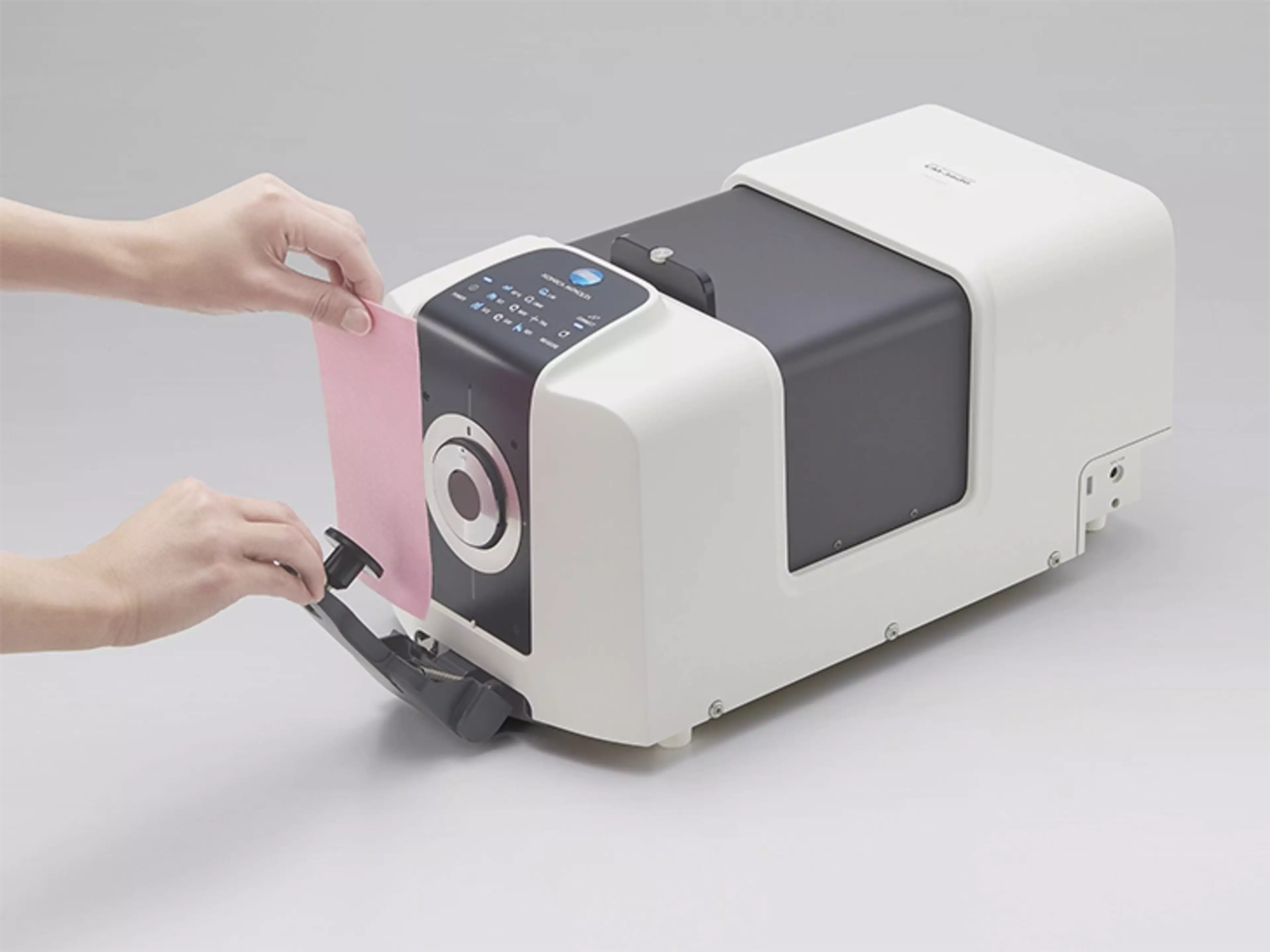Colour Measurement for Garments and Furnishings
Easy to use digital colour data solutions for the textile supply chain
Textiles used for Clothing and Furnishing are typically considered to be colour critical, they are bought based on their visual appearance. The garment and furnishing manufacturers want all products in retail to remain consistent and relevant to the demands of the consumer, without metamerism or inconstant colours which will reflect badly on the brand.
The colour of textiles can be measured using a benchtop spectrophotometer, this will allow the user to understand the impact of processes on the final colour and to perform colour QC. A benchtop like the CM-36dG can measure reflectance colour in 4 different sample sizes from 4-25.4 mm with control over UV for characterising OBAs. It has several innovative features that benefit textile producers, including a built-in sample viewer camera that allows the operator to accurately measure patterned samples.
The CM-26dG is a portable alternative for the textile industry, with UV control, our best ever user interface and created as a close tolerance instrument as standard to allow supply chains to maximise the benefit of digital colour data.

A textile business, with the ability to accurately produce the specified colour in the specified material and do so consistently, can clearly demonstrate its quality and value as a supplier.
Konica Minolta Measuring Instruments offer a comprehensive range of solutions for the textile industry to accurately measure colour data, either for specification to suppliers, approval with customers, development, or product QC. By implementing digital colour data, organisations can implement data driven process and quality control processes that will improve quality and consistency whilst reducing costs and waste.
Digital colour data can be used to expedite the supply process, greatly improving a textile manufacturers ability to react to the market by reducing the risks and costs associated with producing, distributing, and maintaining physical standards. By collaborating with supply partners, using accurate and traceable instruments and tested processes and systems, relationships can be strengthened based on quality, consistency, and communication.
Benefits
- Reduce waste and rejects by integrating colour data, colour communication, and agreed tolerances.
- Improve consistency without metamerism or inconstant colours from batch to batch.
- Deliver high quality following customer's expectations.
- Optimise processes and perform QC.
- Broaden product ranges.
- Reduce subjectivity with supply partners.
Instruments




CF-300 Non-contact Spectrophotometer
High speed, small spot spectrophotometer ideal for patterns and production automation, the CF-300 can measure upto 5 times a second for high throughput colour control in production. The instrument is compatible with a camera connection for precise targetting of samples 1mm or 8mm in size.
Ask our experts




